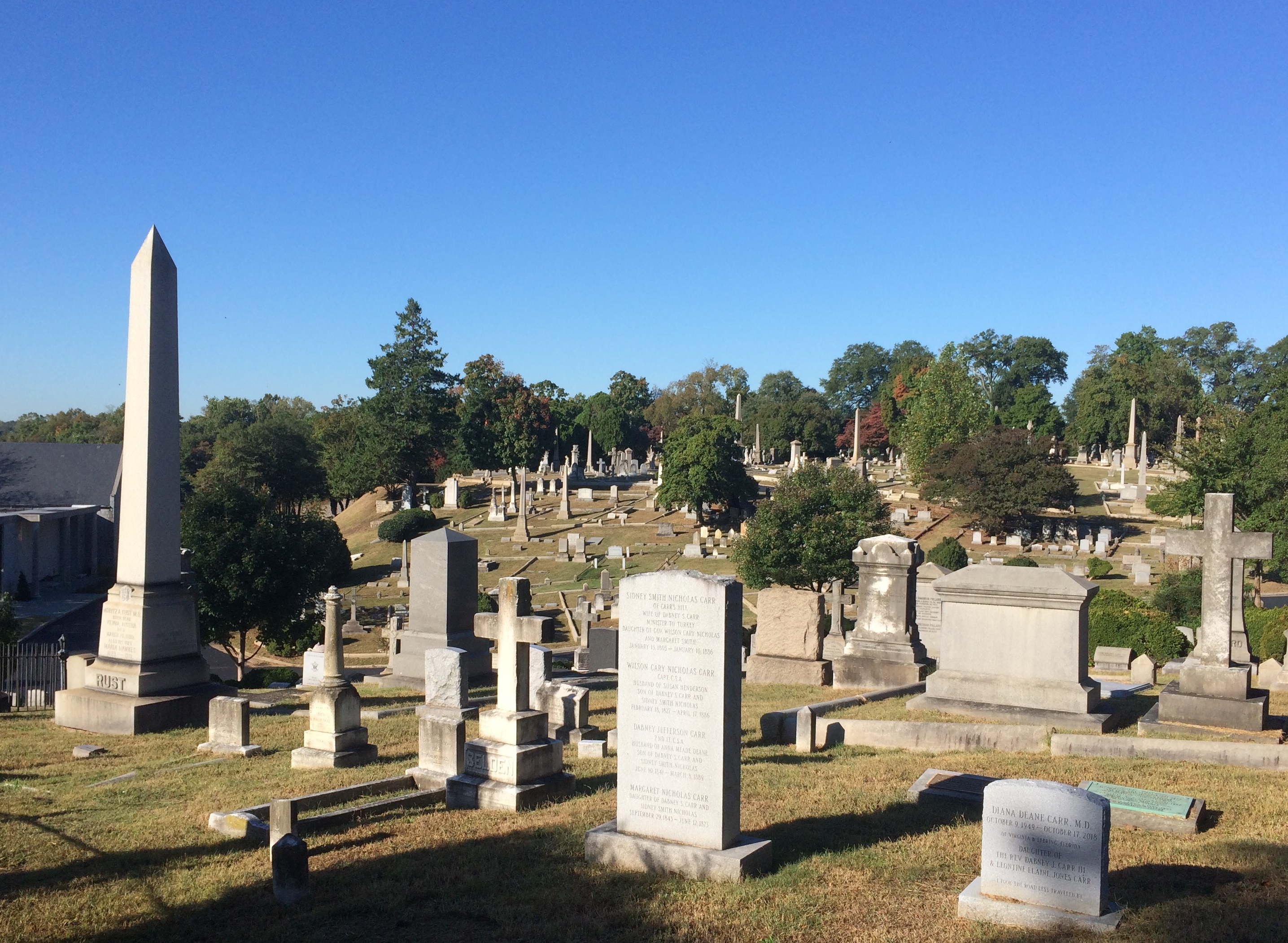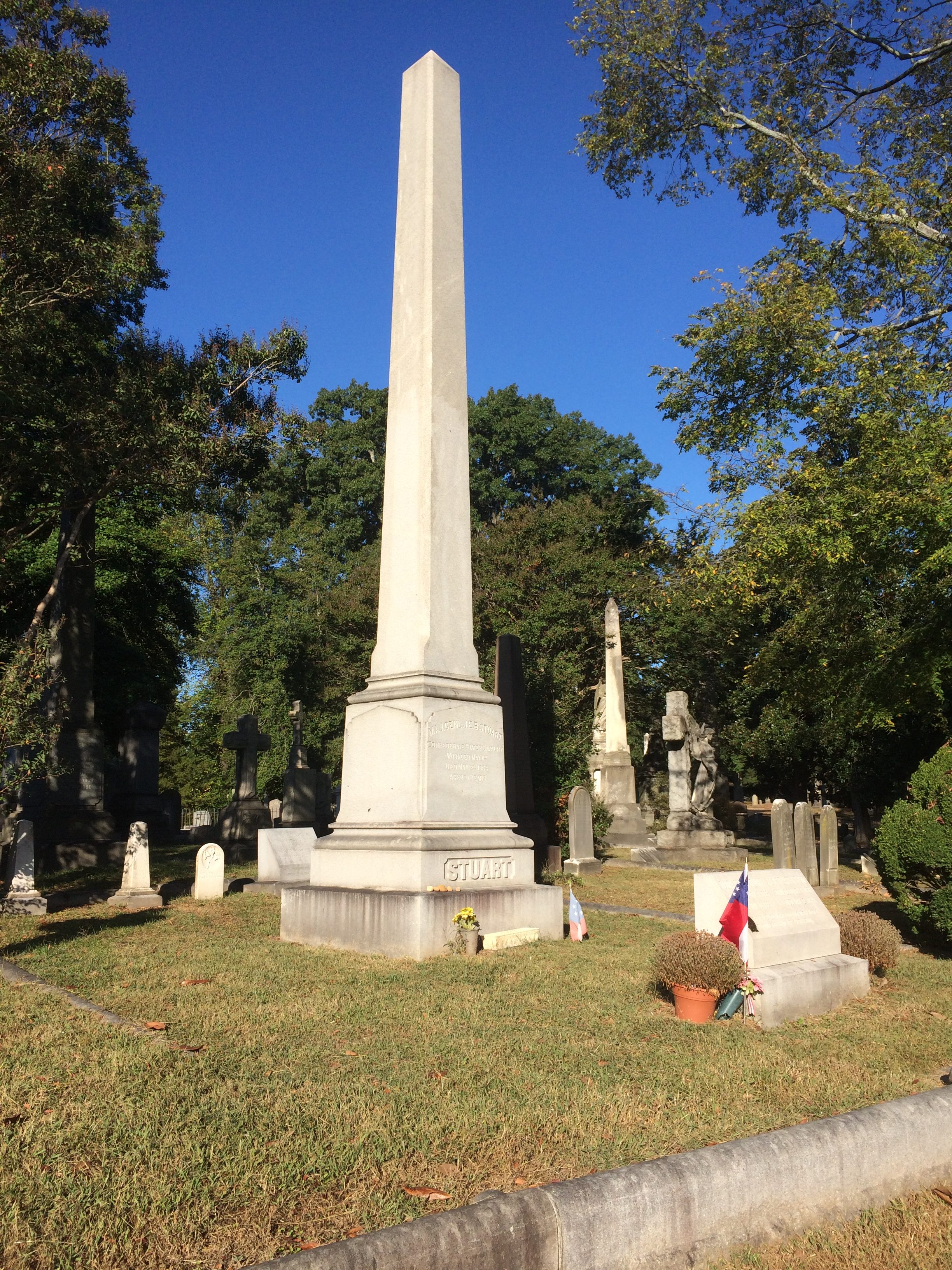It sounds like a place where movie stars repose, but Hollywood Cemetery in Richmond had that name long before the film industry acquired its metonym. The graveyard in California is the Hollywood Forever Cemetery, named such only in 1998 in a clear exercise in marketing. Founded in 1849, Virginia’s Hollywood is a first-rate example of the rural cemetery movement of the 19th century, and as beautiful a graveyard as you’ll find anywhere.
The cemetery stands on hills overlooking the James River, covering 130 acres not far west of downtown and counting more than 64,000 permanent residents. It has everything an aesthetic cemetery should have: landscape contour, trees and bushes, funerary art and a wide variety of stones, and notable burials.
I went on the warm and clear morning of October 15 not long after Hollywood opened. Getting there wasn’t too hard. It’s enough of an attraction that signs point the way.
But I suppose not that many people come on Tuesday mornings. A handful of joggers and dog walkers and groundsmen were the only other living people there.
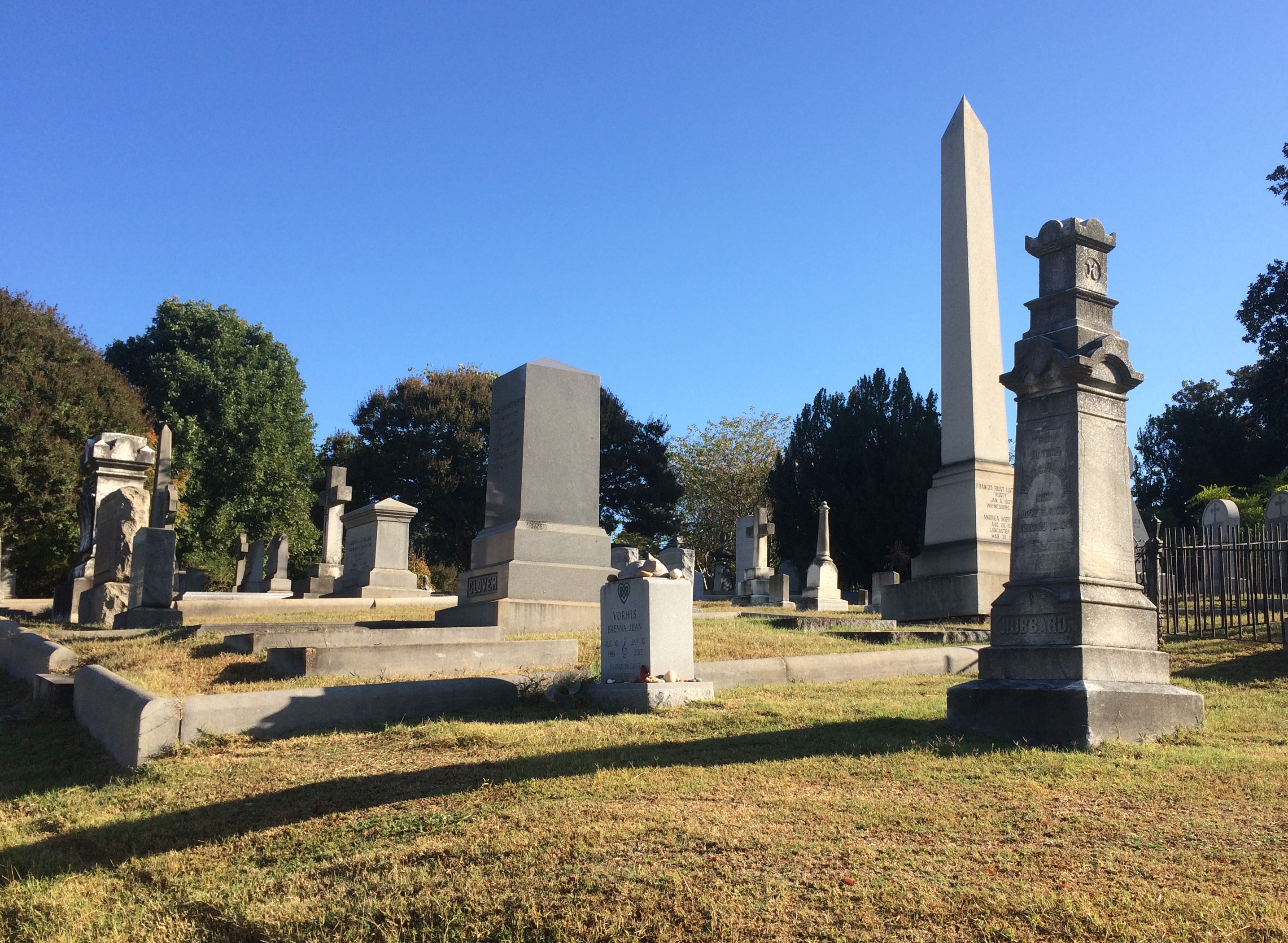
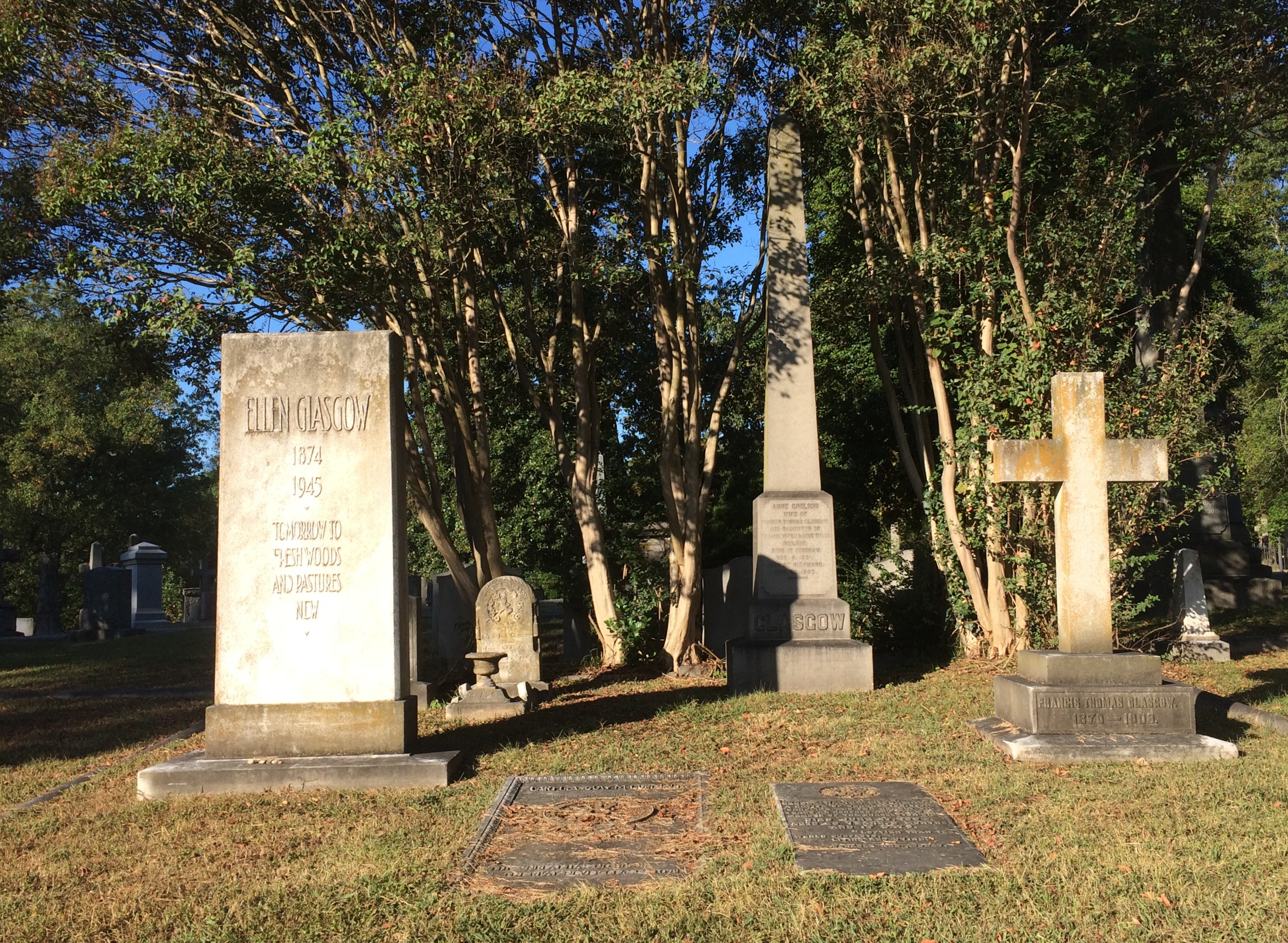
 Some mausoleums, but maybe not as many as in cemeteries in historically more prosperous parts of the country.
Some mausoleums, but maybe not as many as in cemeteries in historically more prosperous parts of the country.
Hollywood offers some nice views of the James. I’d heard that the river was low because the region’s been dry lately.
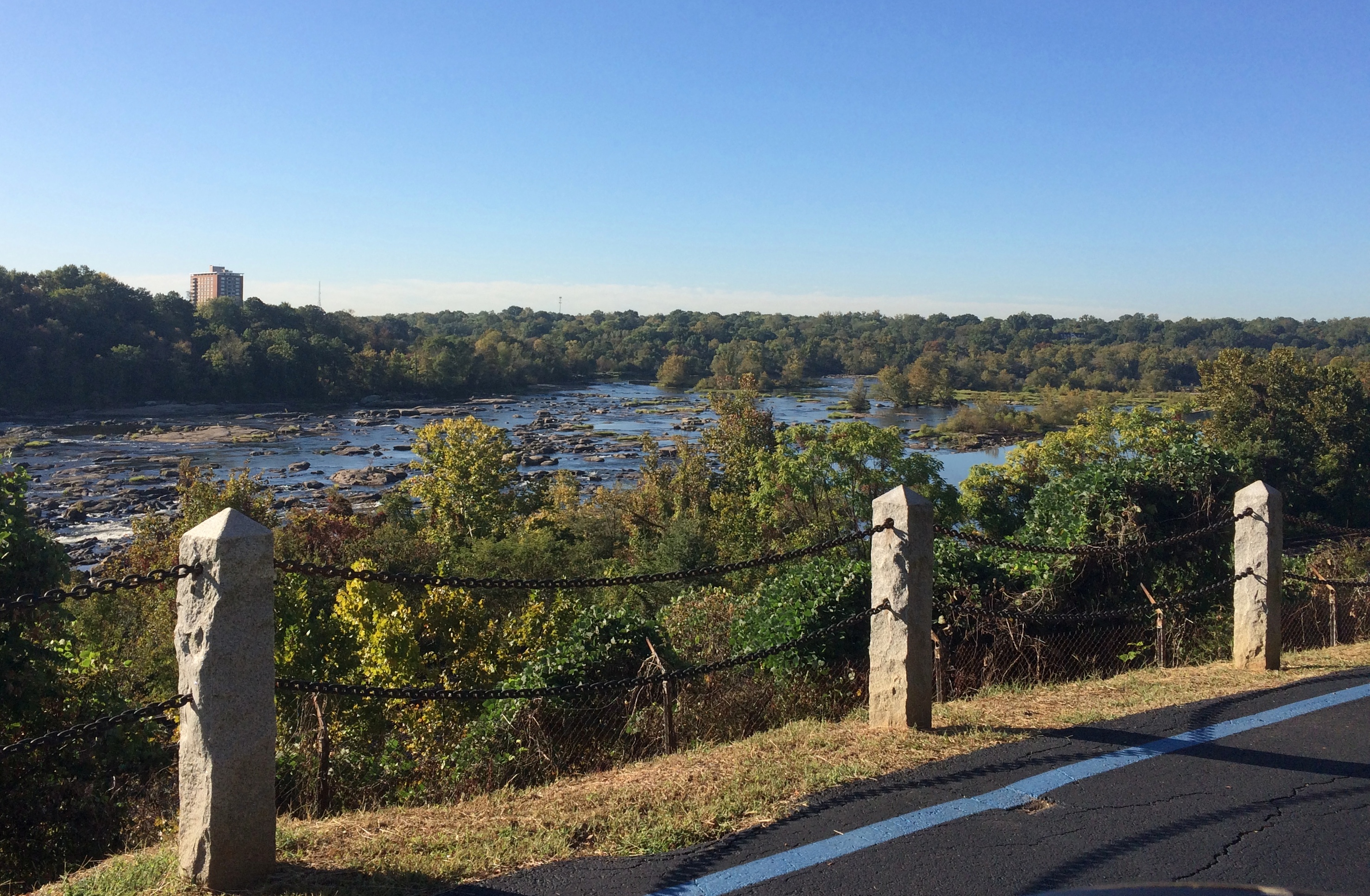 As you’d expect, one section has an enormous Confederate burial ground.
As you’d expect, one section has an enormous Confederate burial ground.
 Made distinctive by a monumental pyramid, dedicated in 1869.
Made distinctive by a monumental pyramid, dedicated in 1869.
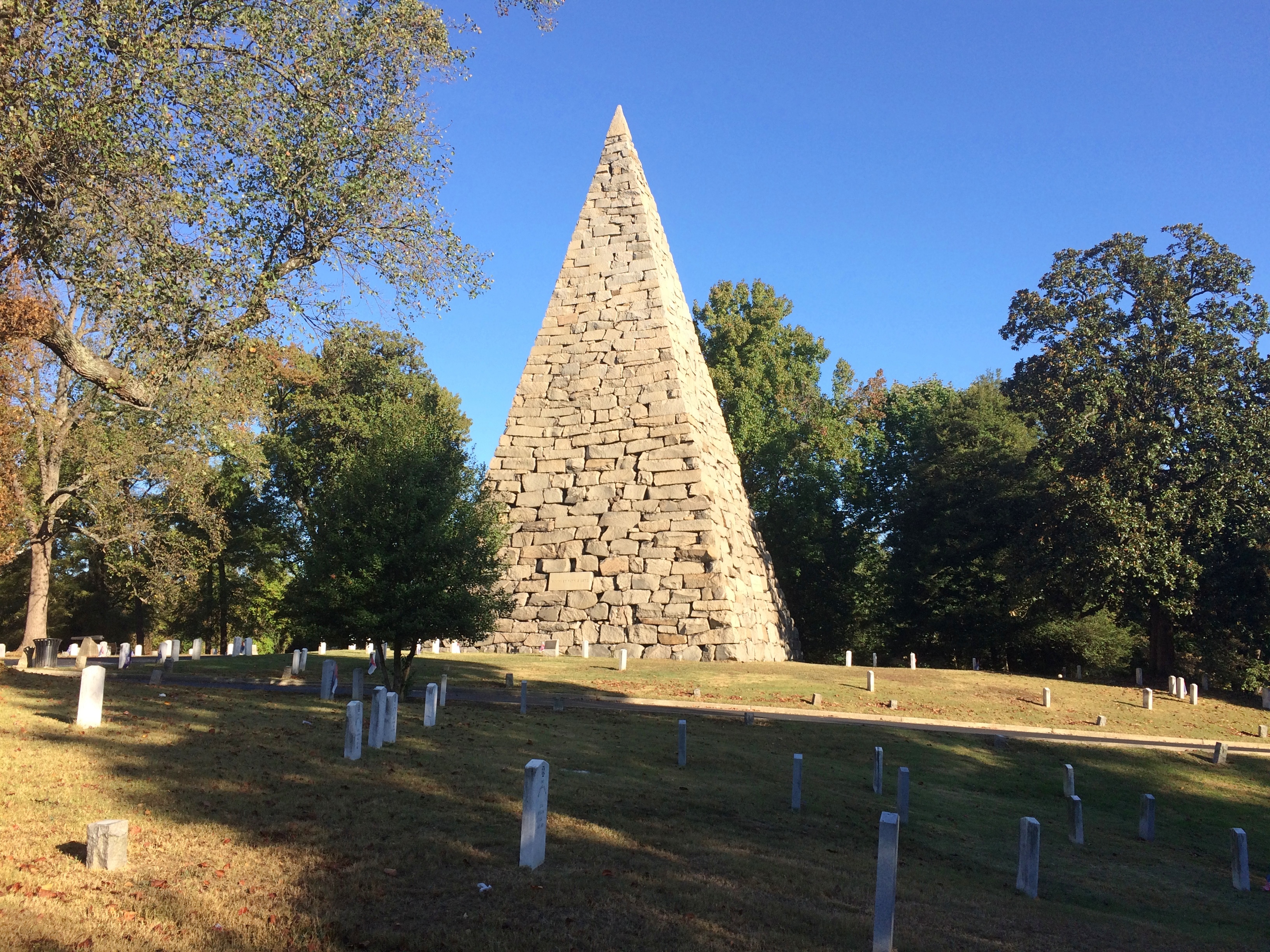 “This famed 90-foot pyramid stands as a monument to the 18,000 Confederate soldiers buried in Hollywood Cemetery,” the cemetery web site says. “Made entirely from large blocks of James River granite, the pyramid was created through the efforts of the women of the Hollywood Memorial Association who tended the graves of the Confederate dead after the Civil War. They worked together to raise over $18,000 and commissioned the help of engineer Charles Henry Dimmock to design the pyramid.”
“This famed 90-foot pyramid stands as a monument to the 18,000 Confederate soldiers buried in Hollywood Cemetery,” the cemetery web site says. “Made entirely from large blocks of James River granite, the pyramid was created through the efforts of the women of the Hollywood Memorial Association who tended the graves of the Confederate dead after the Civil War. They worked together to raise over $18,000 and commissioned the help of engineer Charles Henry Dimmock to design the pyramid.”
By chance, I happened across J.E.B. Stuart’s grave. Plenty of other Confederate generals lie in Hollywood as well.
But I wanted to find the cemetery’s presidential graves, which I did. Jefferson Davis was hard to miss, located toward the western edge of Hollywood among other members of his family. He and his wife Varina are in front of the bronze.
 I believe that’s the third flag of the Confederacy, limp on the flagpole. The draped figure on the left marks the graves of Joel and Margaret Hayes; she was one of the Davis daughters. Off further to the left, though not in the picture, is the grave of Fitzhugh Lee.
I believe that’s the third flag of the Confederacy, limp on the flagpole. The draped figure on the left marks the graves of Joel and Margaret Hayes; she was one of the Davis daughters. Off further to the left, though not in the picture, is the grave of Fitzhugh Lee.
The angel marks the grave of Varina Anne Davis (1864-1898), youngest daughter of the Davises.
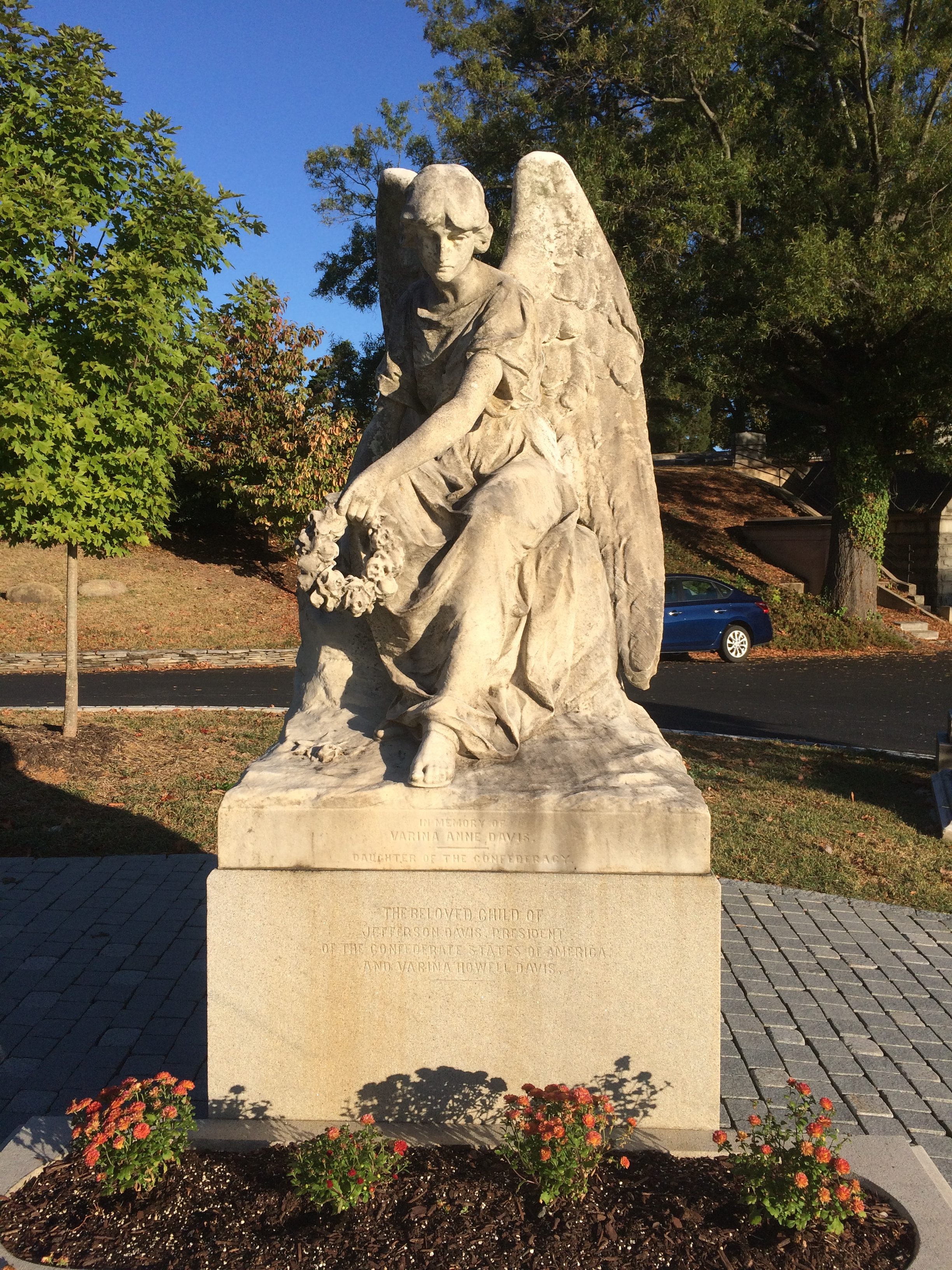 On one of the cemetery’s prominent ridges is Presidents Circle, location of the two U.S. presidents.
On one of the cemetery’s prominent ridges is Presidents Circle, location of the two U.S. presidents.
 One is James Monroe.
One is James Monroe.
 He died in 1831, before the cemetery opened, but was re-interred here in 1858 from New York City, during the centennial year of his birth. Apparently the reinterment was quite a big deal, involving speeches, banquets, civilian and military escorts, and a fair amount of cooperation between the states of Virginia and New York, as detailed in this article in the Richmond-Times Dispatch.
He died in 1831, before the cemetery opened, but was re-interred here in 1858 from New York City, during the centennial year of his birth. Apparently the reinterment was quite a big deal, involving speeches, banquets, civilian and military escorts, and a fair amount of cooperation between the states of Virginia and New York, as detailed in this article in the Richmond-Times Dispatch.
The article also notes a toast delivered by a Richmonder at the Virginia banquet: “New York and Virginia; united in glory, united in interest… nothing but fanaticism can separate them.”
Oh, well. Architect Albert Lybrock designed Monroe’s Gothic Revival cast-iron monument. Seems like he’s best known for that very work.
Not far away is John Tyler’s tall marker, mostly in shadow when I saw it.
 He happened to be in Richmond when he died in early 1862, before he could take his seat in the CSA House of Representatives. He had been in the Provisional Congress, however.
He happened to be in Richmond when he died in early 1862, before he could take his seat in the CSA House of Representatives. He had been in the Provisional Congress, however.
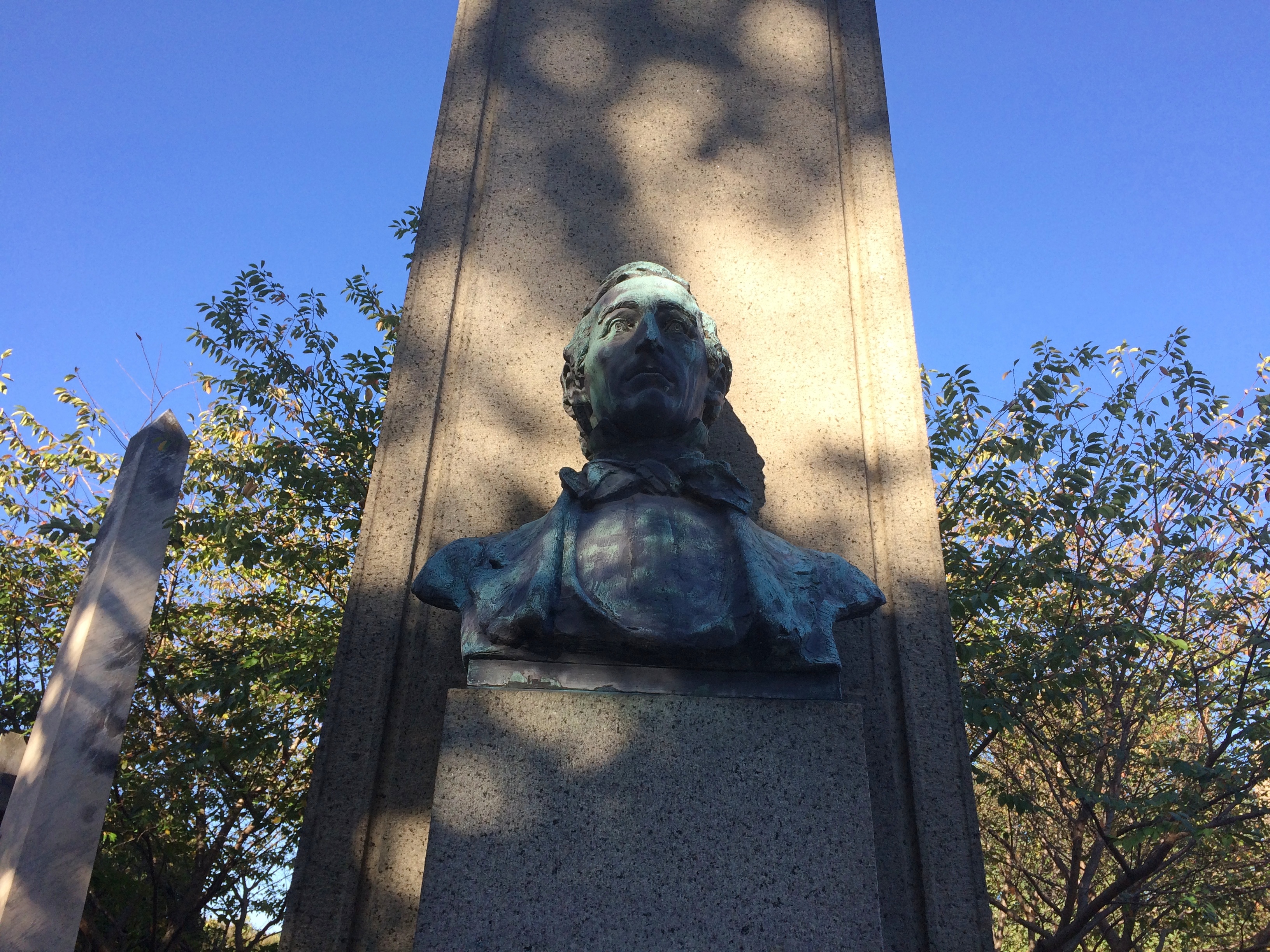 His second wife, Julia, is with him, and a few of his large brood are nearby. Hollywood Cemetery says: “Tyler requested arrangements for a simple burial, but Confederate President Jefferson Davis hosted a grand event, complete with a Confederate flag draped over the coffin.”
His second wife, Julia, is with him, and a few of his large brood are nearby. Hollywood Cemetery says: “Tyler requested arrangements for a simple burial, but Confederate President Jefferson Davis hosted a grand event, complete with a Confederate flag draped over the coffin.”
The bust wasn’t added until 1915. Guess bronze was in short supply in secessionist Virginia, and funds in short supply after the war. The work is by Raymond Averill Porter, better known for a Henry Cabot Lodge statue in Boston.
Counting the two latest ones, that makes 17 U.S. presidential grave sites I’ve visited: Jefferson, Monroe, Jackson, Tyler, Polk, Lincoln, A. Johnson, Grant, Hayes, B. Harrison, Taft, Hoover, Truman, Kennedy, LBJ, Nixon and Ford.


